qplot() is a shortcut designed to be familiar if you're used to base
plot(). It's a convenient wrapper for creating a number of
different types of plots using a consistent calling scheme. It's great
for allowing you to produce plots quickly, but I highly recommend
learning ggplot() as it makes it easier to create
complex graphics.
qplot(
x,
y,
...,
data,
facets = NULL,
margins = FALSE,
geom = "auto",
xlim = c(NA, NA),
ylim = c(NA, NA),
log = "",
main = NULL,
xlab = NULL,
ylab = NULL,
asp = NA,
stat = NULL,
position = NULL
)
quickplot(
x,
y,
...,
data,
facets = NULL,
margins = FALSE,
geom = "auto",
xlim = c(NA, NA),
ylim = c(NA, NA),
log = "",
main = NULL,
xlab = NULL,
ylab = NULL,
asp = NA,
stat = NULL,
position = NULL
)Arguments
- x, y, ...
Aesthetics passed into each layer
- data
Data frame to use (optional). If not specified, will create one, extracting vectors from the current environment.
- facets
faceting formula to use. Picks
facet_wrap()orfacet_grid()depending on whether the formula is one- or two-sided- margins
See
facet_grid(): display marginal facets?- geom
Character vector specifying geom(s) to draw. Defaults to "point" if x and y are specified, and "histogram" if only x is specified.
- xlim, ylim
X and y axis limits
- log
Which variables to log transform ("x", "y", or "xy")
- main, xlab, ylab
Character vector (or expression) giving plot title, x axis label, and y axis label respectively.
- asp
The y/x aspect ratio
- stat, position
DEPRECATED.
Examples
# Use data from data.frame
qplot(mpg, wt, data = mtcars)
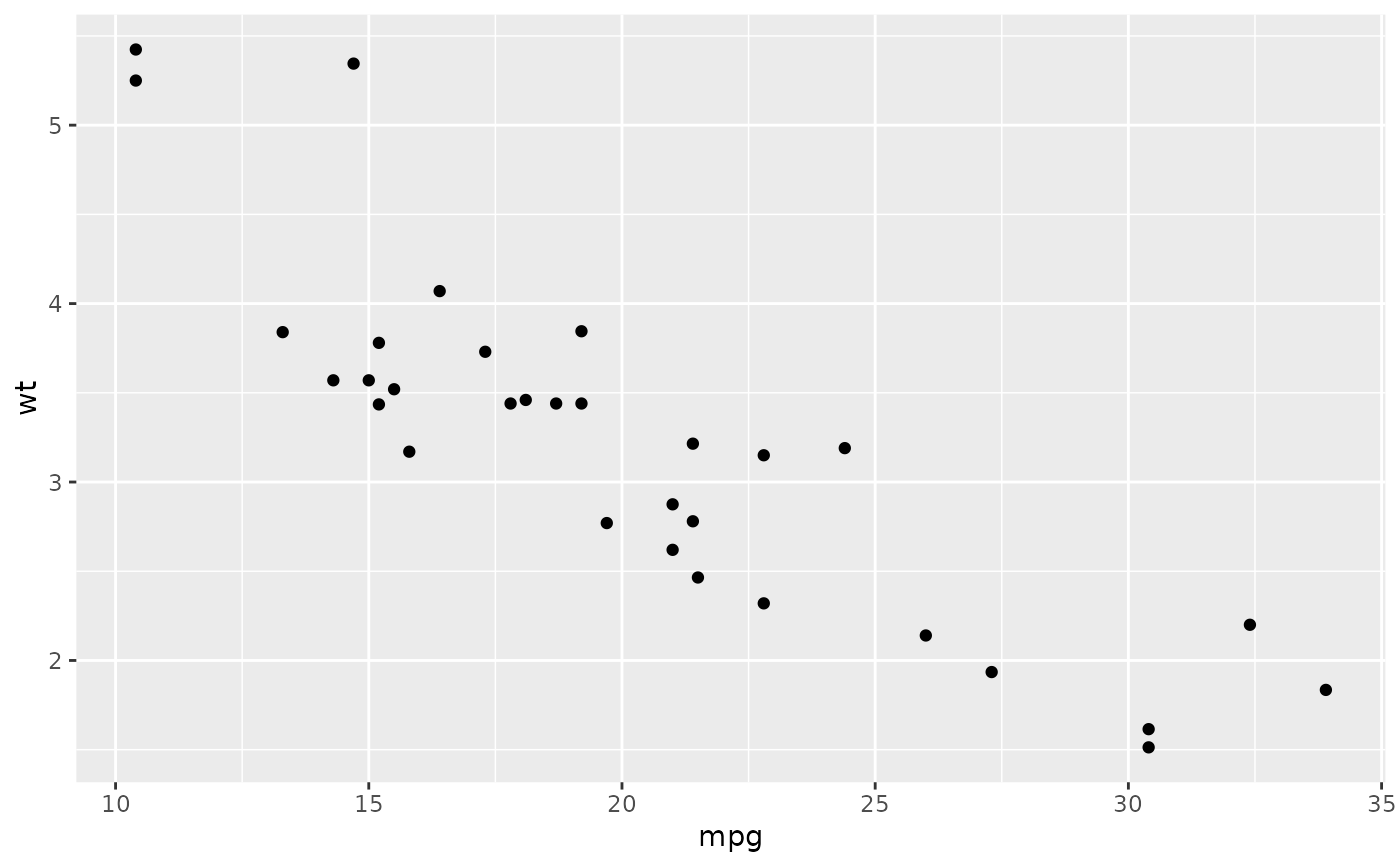 qplot(mpg, wt, data = mtcars, colour = cyl)
qplot(mpg, wt, data = mtcars, colour = cyl)
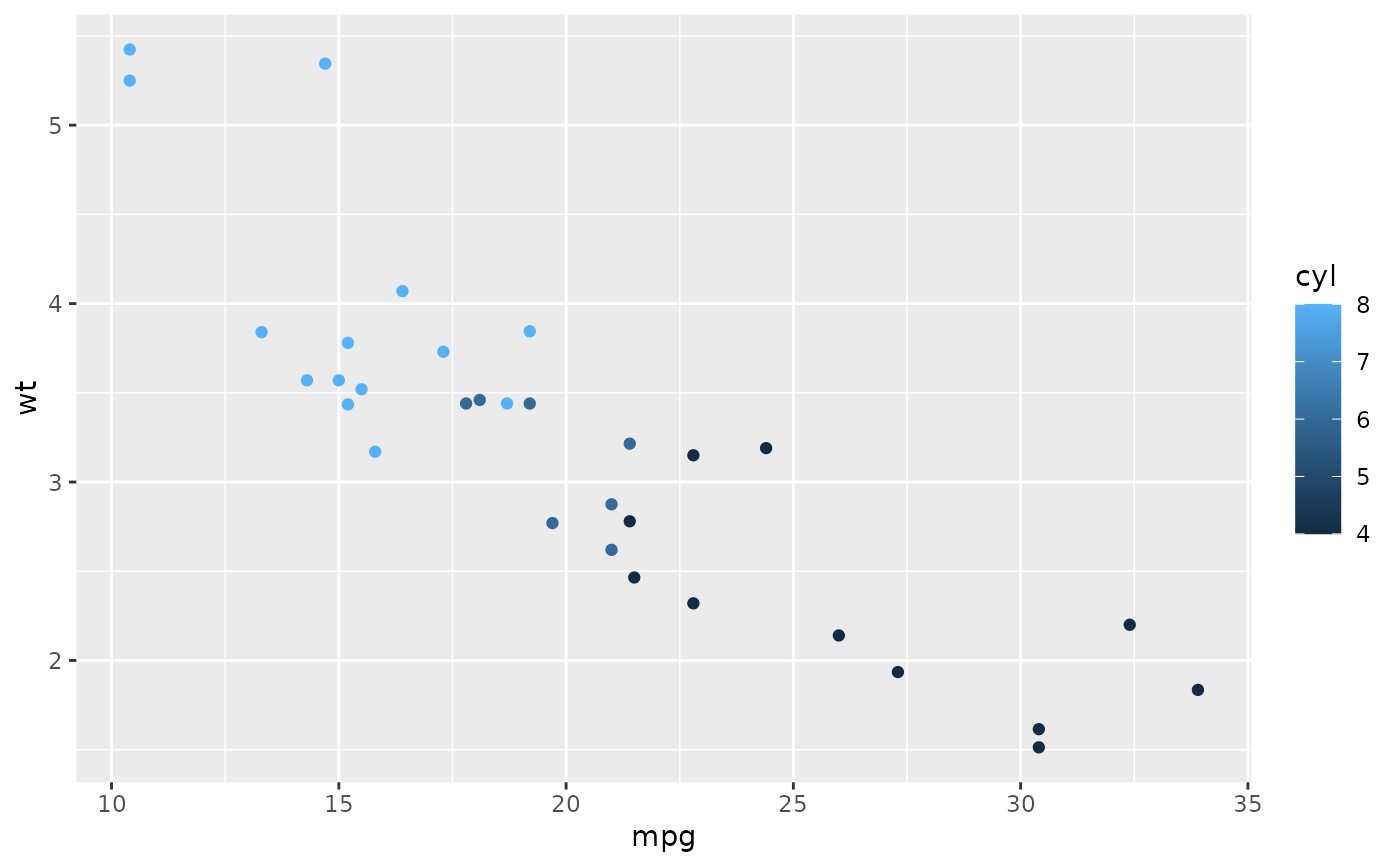 qplot(mpg, wt, data = mtcars, size = cyl)
qplot(mpg, wt, data = mtcars, size = cyl)
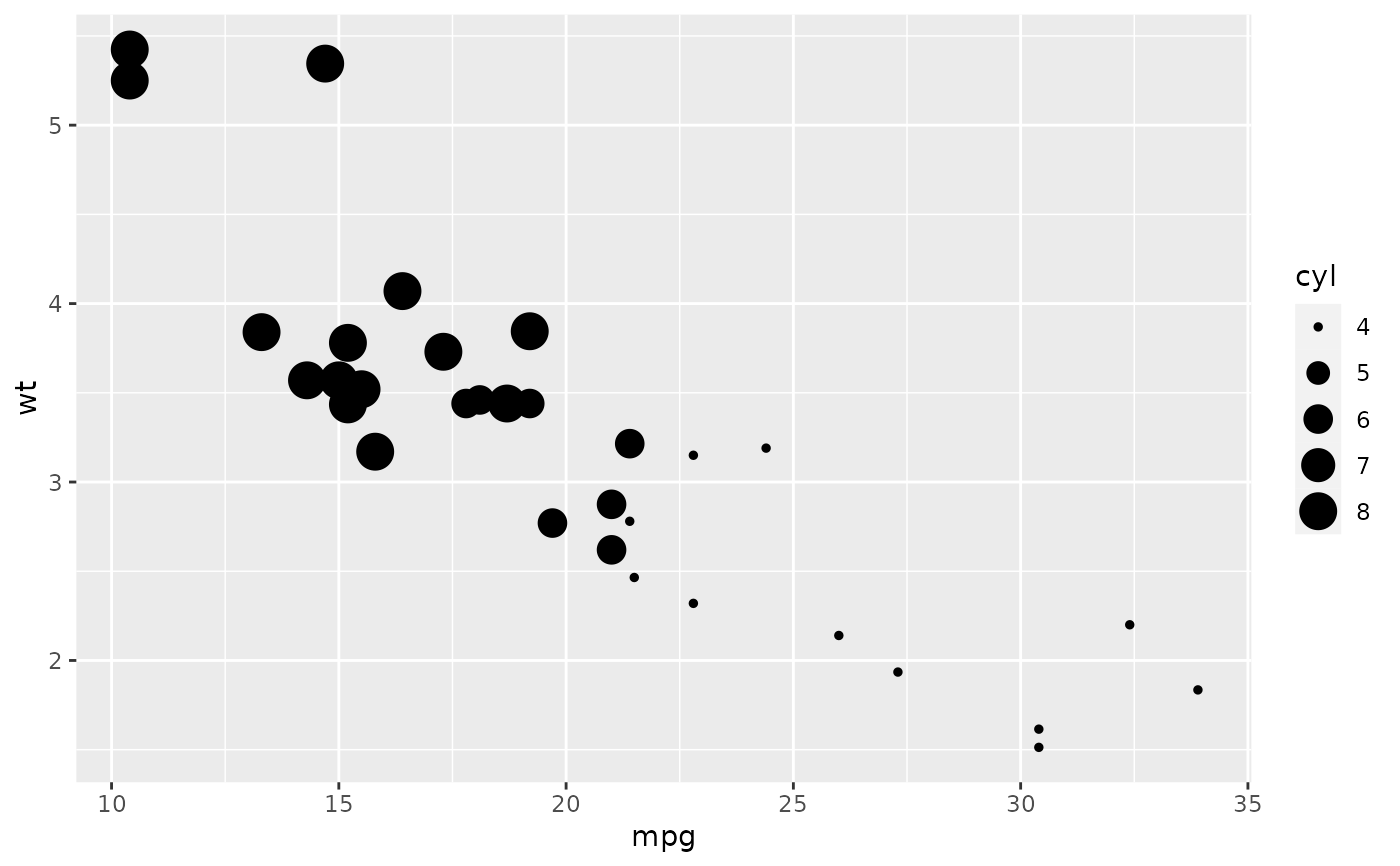 qplot(mpg, wt, data = mtcars, facets = vs ~ am)
qplot(mpg, wt, data = mtcars, facets = vs ~ am)
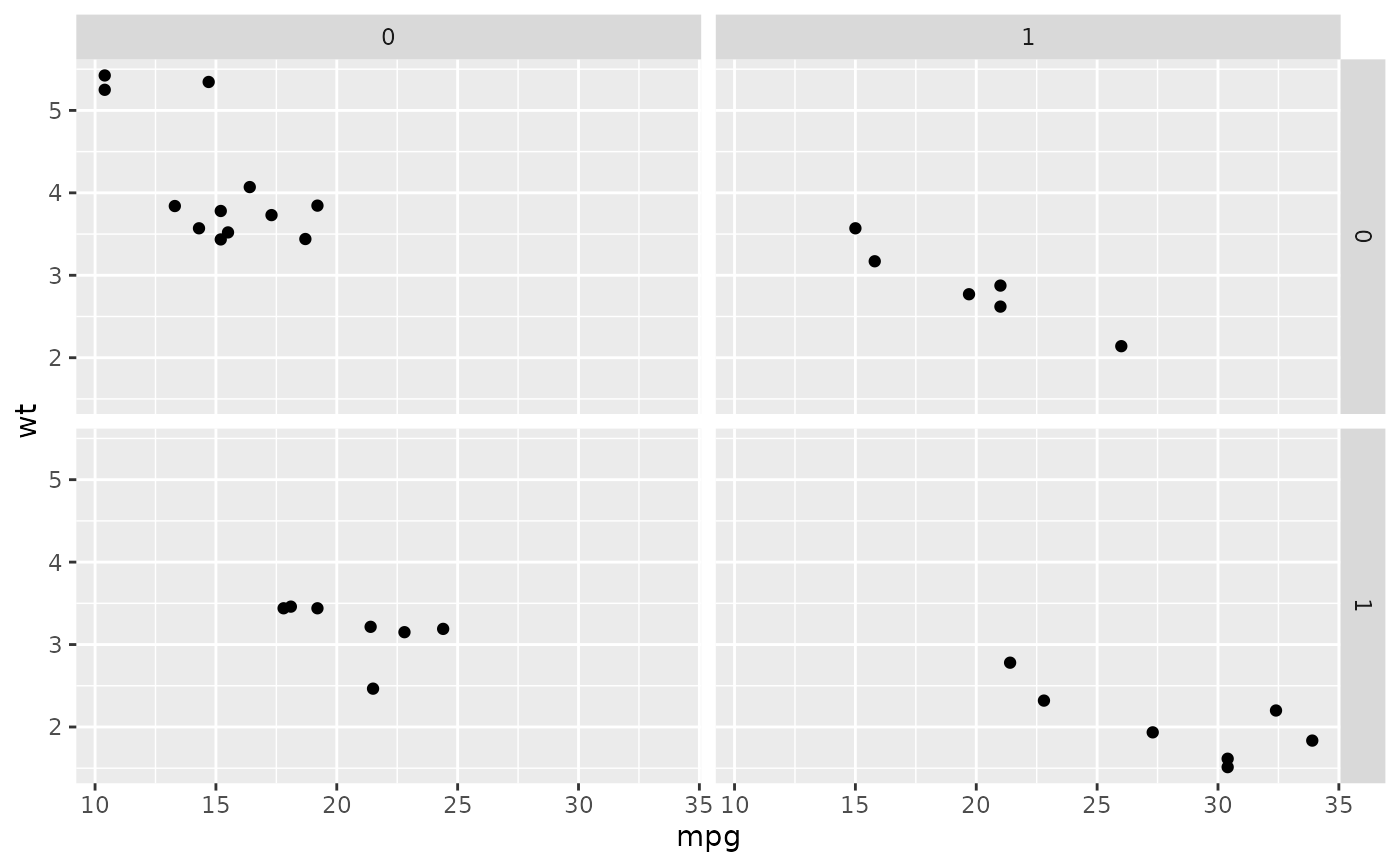 # \donttest{
qplot(1:10, rnorm(10), colour = runif(10))
# \donttest{
qplot(1:10, rnorm(10), colour = runif(10))
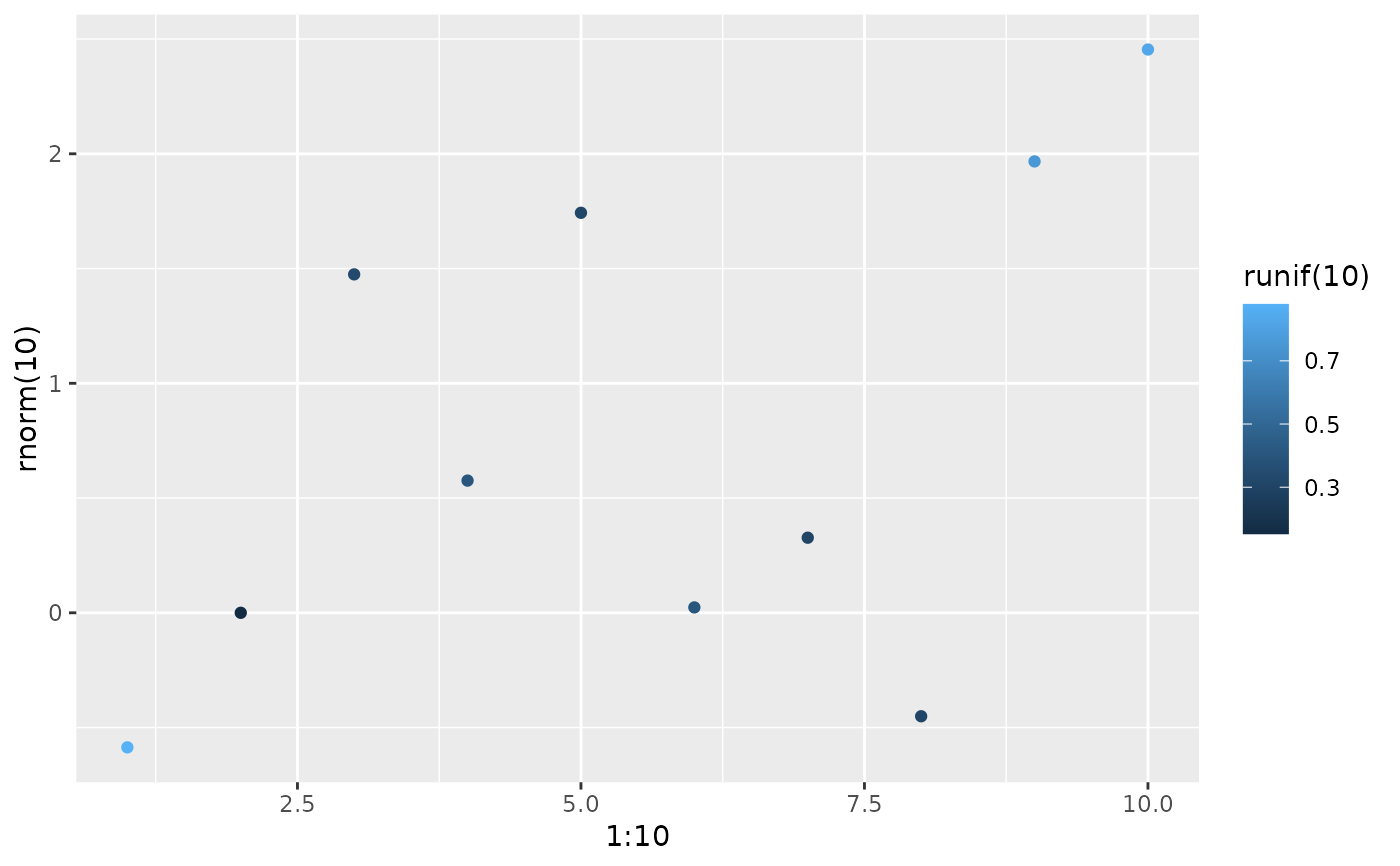 qplot(1:10, letters[1:10])
qplot(1:10, letters[1:10])
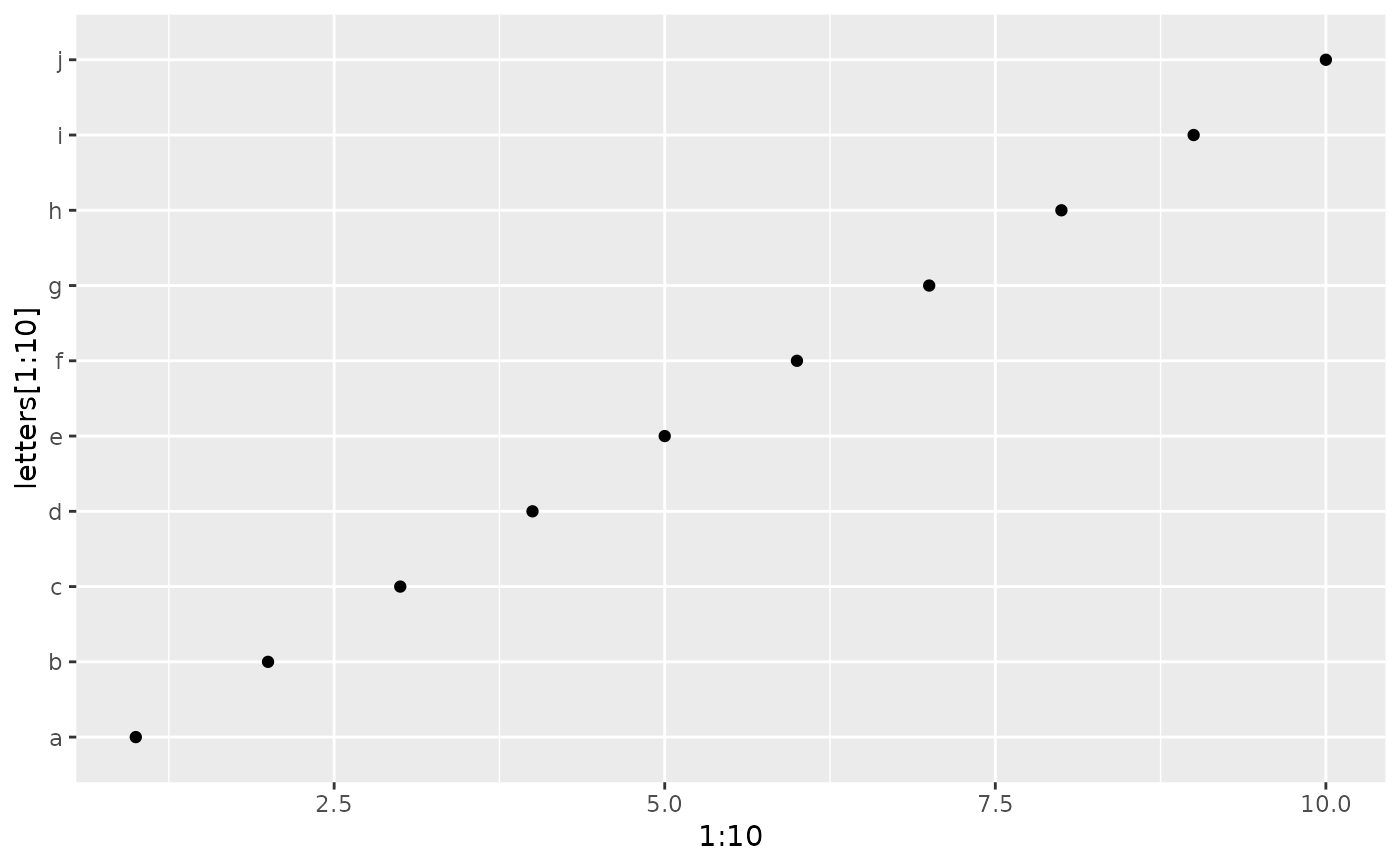 mod <- lm(mpg ~ wt, data = mtcars)
qplot(resid(mod), fitted(mod))
mod <- lm(mpg ~ wt, data = mtcars)
qplot(resid(mod), fitted(mod))
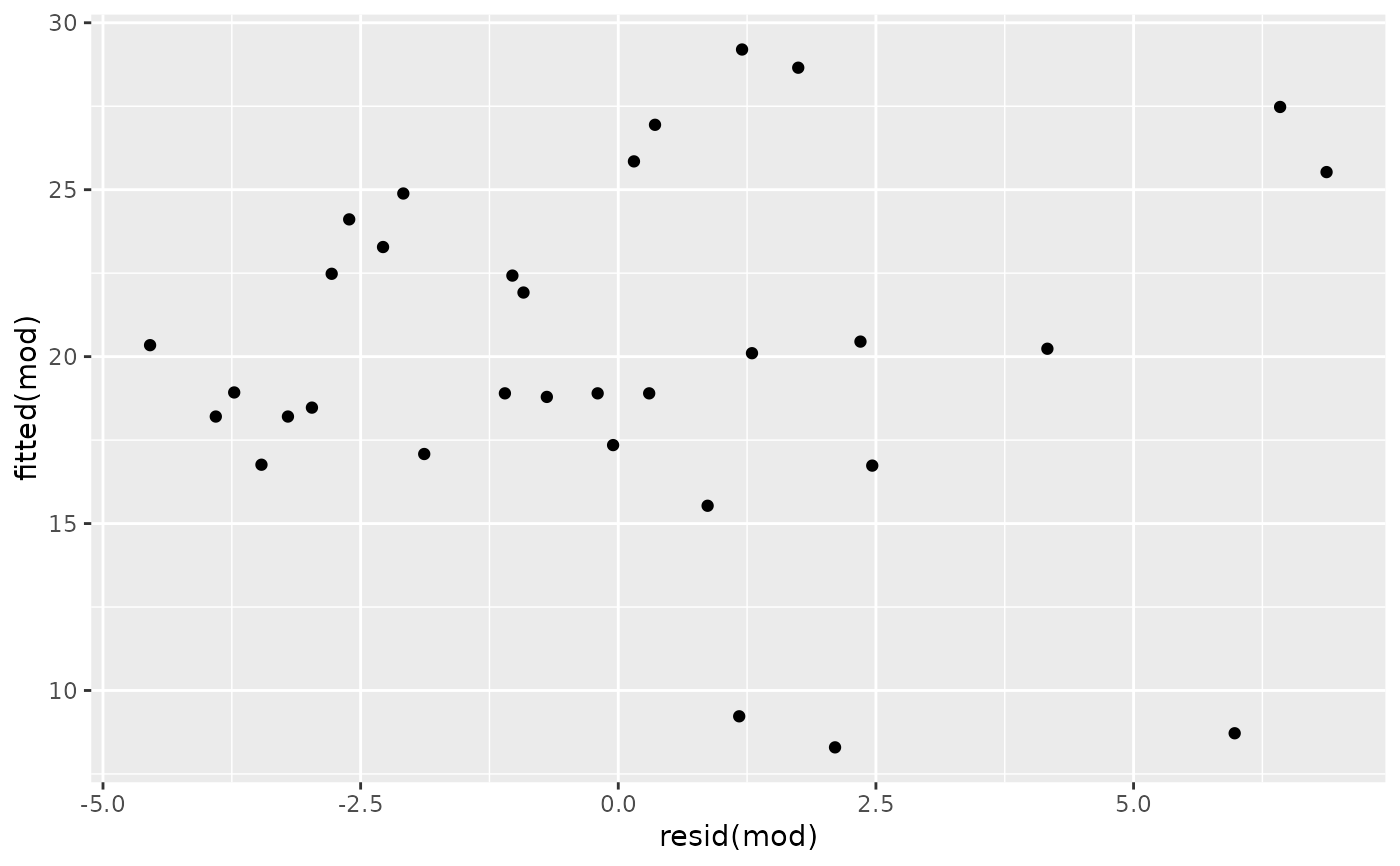 f <- function() {
a <- 1:10
b <- a ^ 2
qplot(a, b)
}
f()
f <- function() {
a <- 1:10
b <- a ^ 2
qplot(a, b)
}
f()
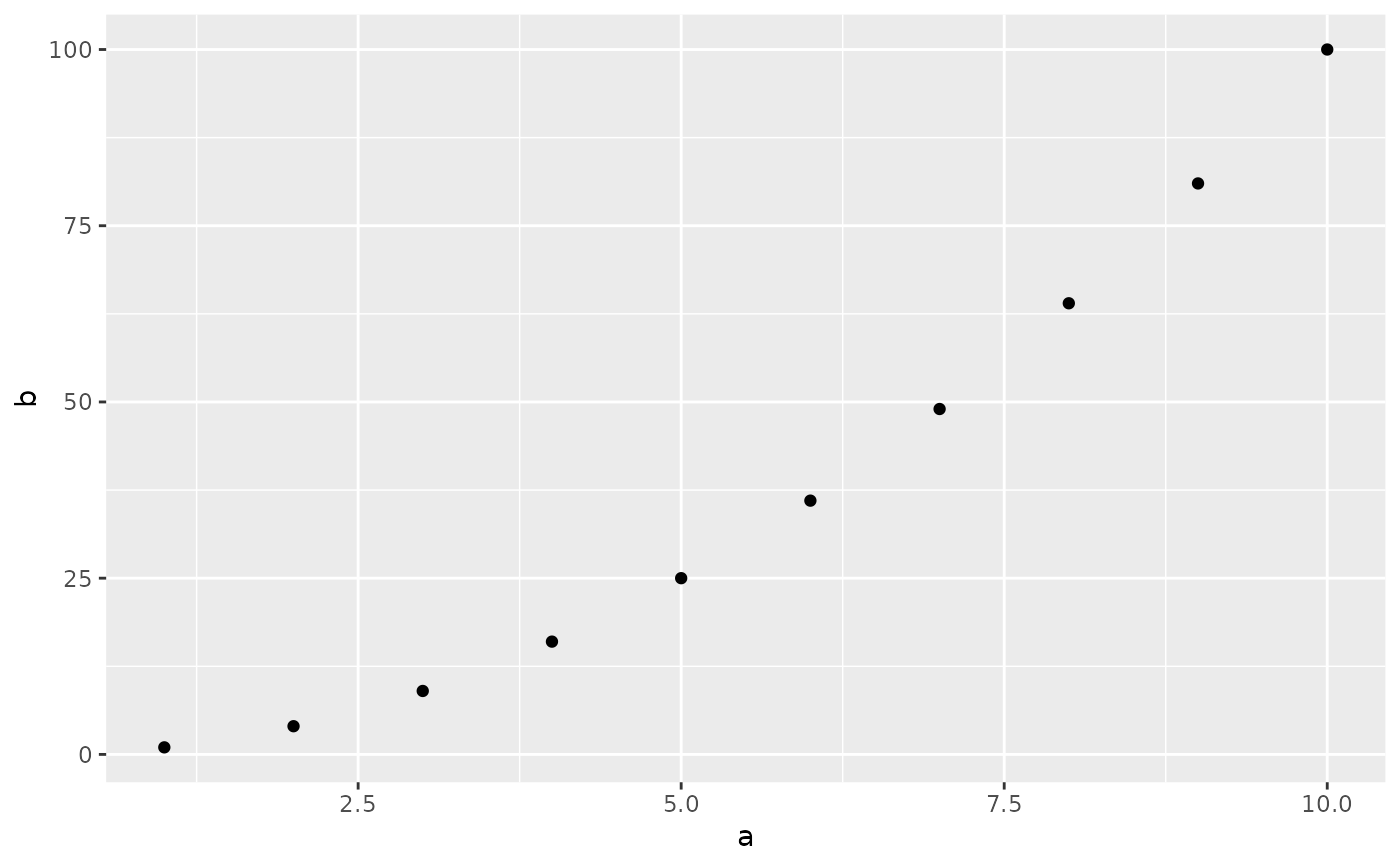 # To set aesthetics, wrap in I()
qplot(mpg, wt, data = mtcars, colour = I("red"))
# To set aesthetics, wrap in I()
qplot(mpg, wt, data = mtcars, colour = I("red"))
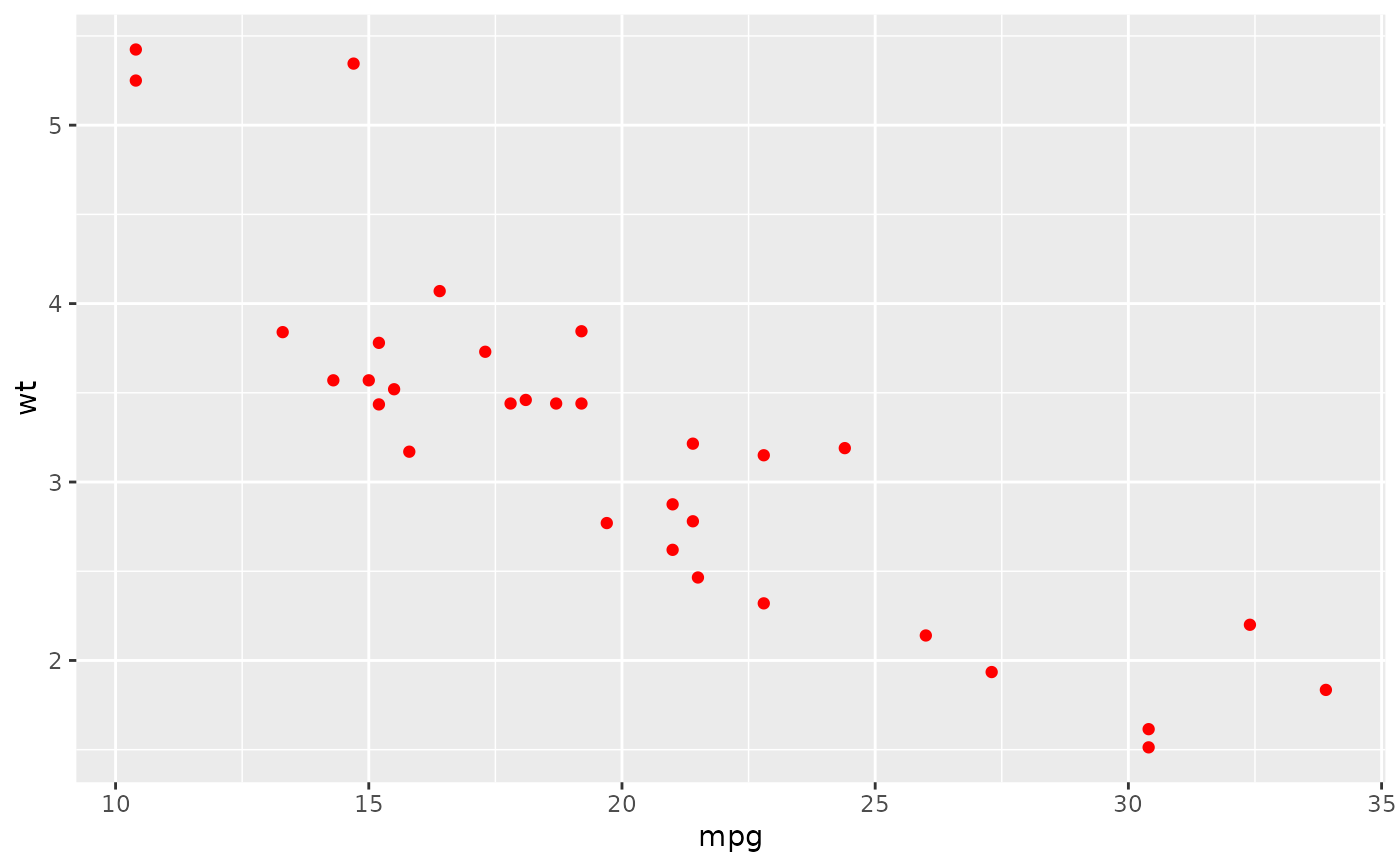 # qplot will attempt to guess what geom you want depending on the input
# both x and y supplied = scatterplot
qplot(mpg, wt, data = mtcars)
# qplot will attempt to guess what geom you want depending on the input
# both x and y supplied = scatterplot
qplot(mpg, wt, data = mtcars)
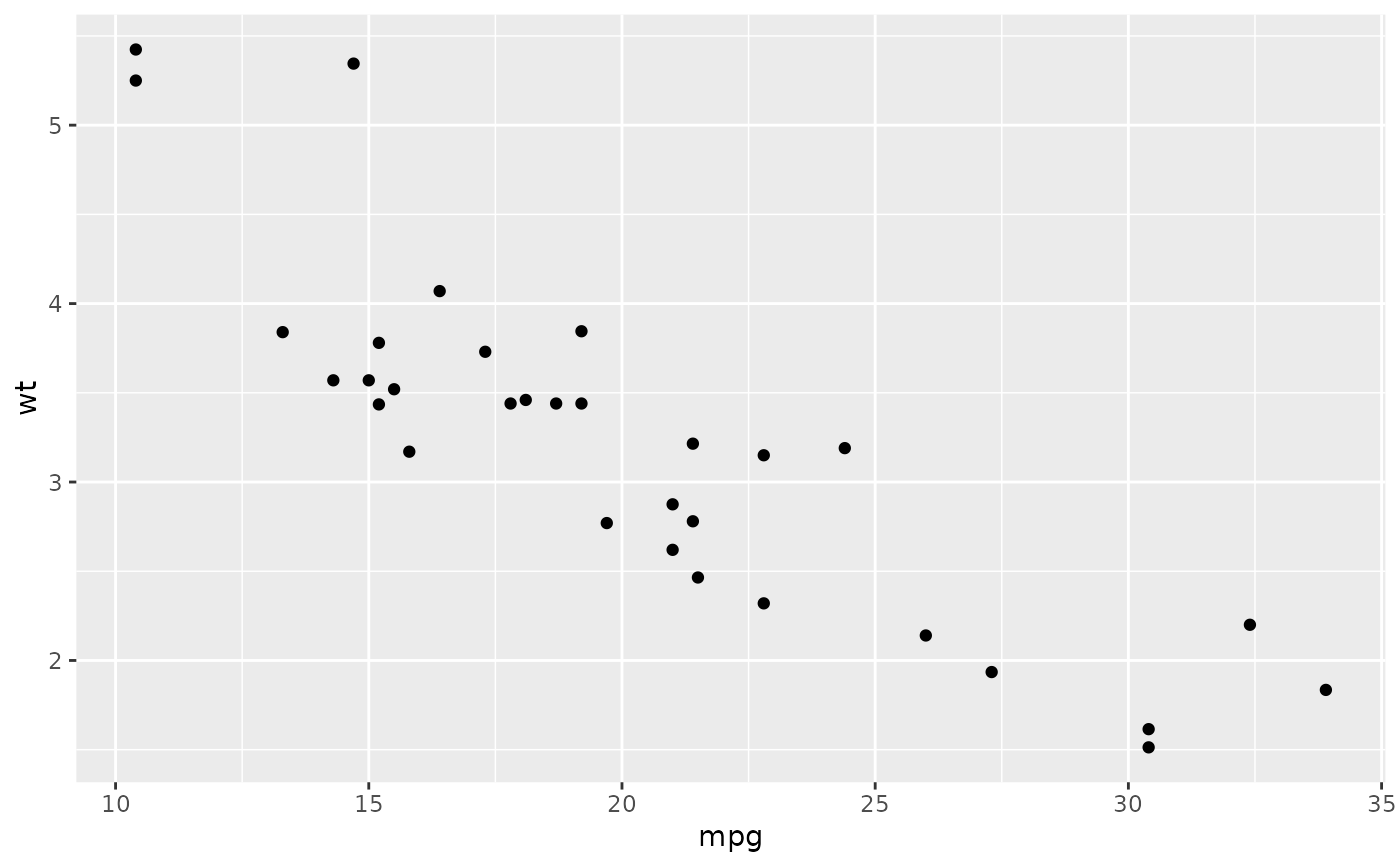 # just x supplied = histogram
qplot(mpg, data = mtcars)
#> `stat_bin()` using `bins = 30`. Pick better value with `binwidth`.
# just x supplied = histogram
qplot(mpg, data = mtcars)
#> `stat_bin()` using `bins = 30`. Pick better value with `binwidth`.
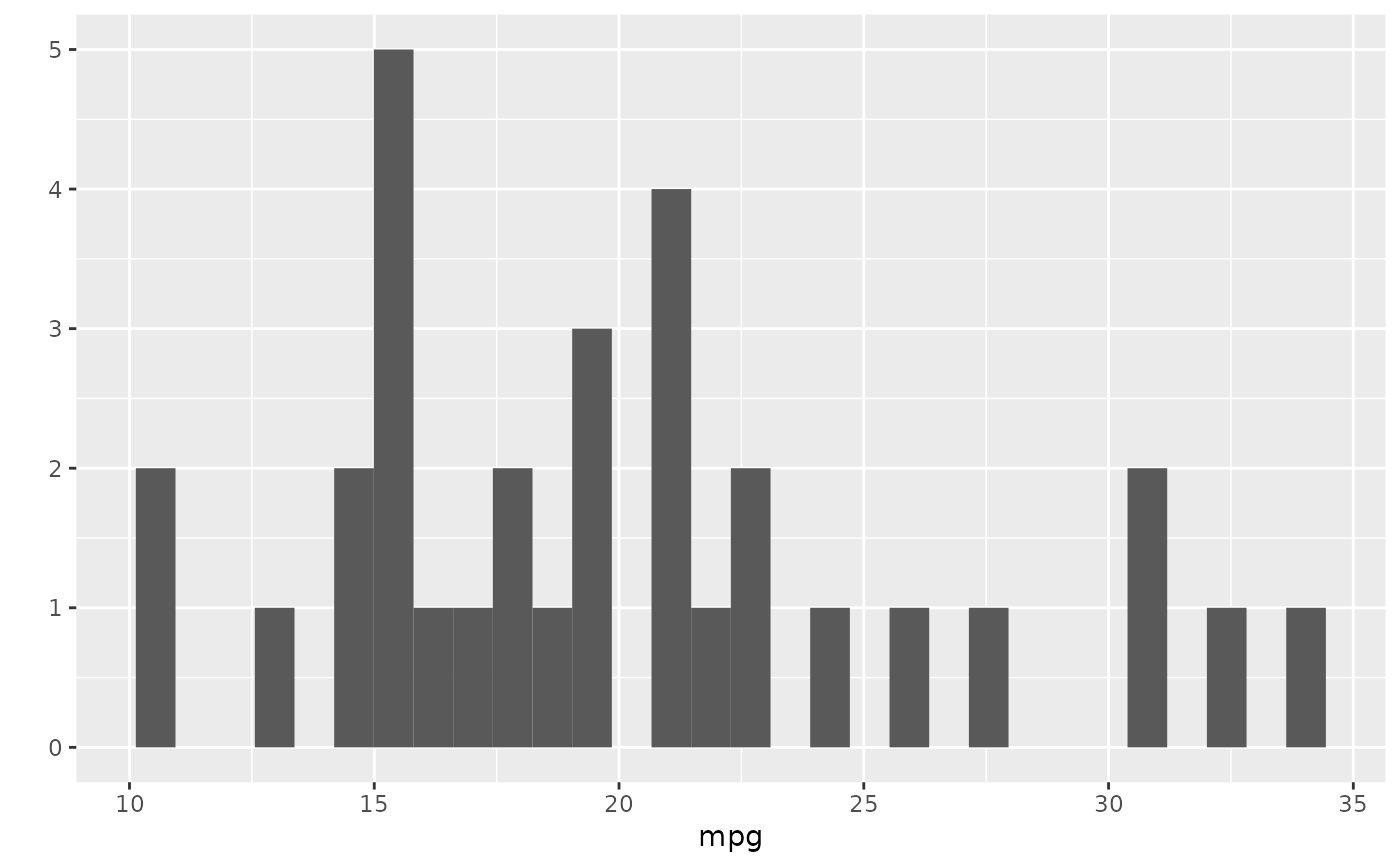 # just y supplied = scatterplot, with x = seq_along(y)
qplot(y = mpg, data = mtcars)
# just y supplied = scatterplot, with x = seq_along(y)
qplot(y = mpg, data = mtcars)
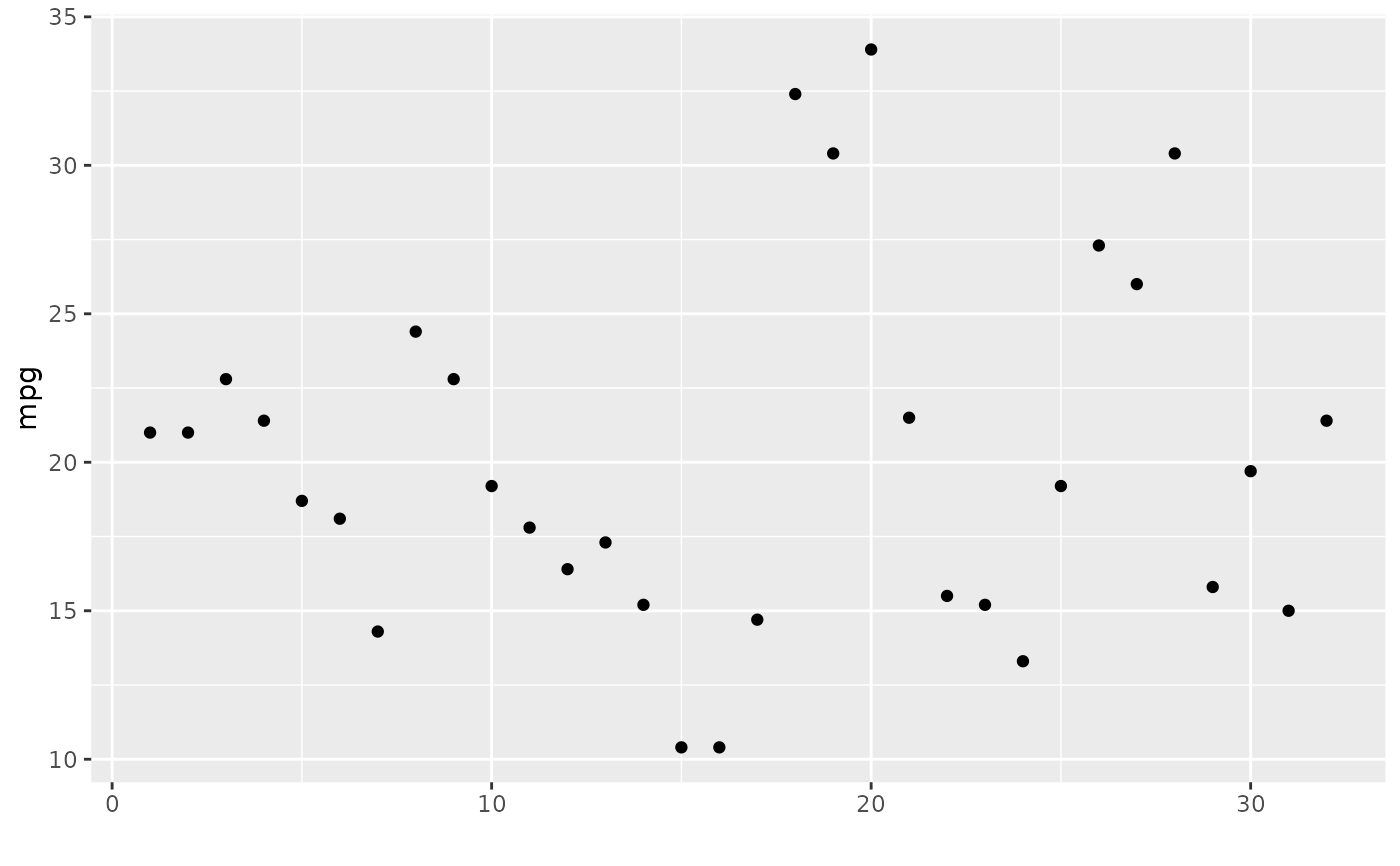 # Use different geoms
qplot(mpg, wt, data = mtcars, geom = "path")
# Use different geoms
qplot(mpg, wt, data = mtcars, geom = "path")
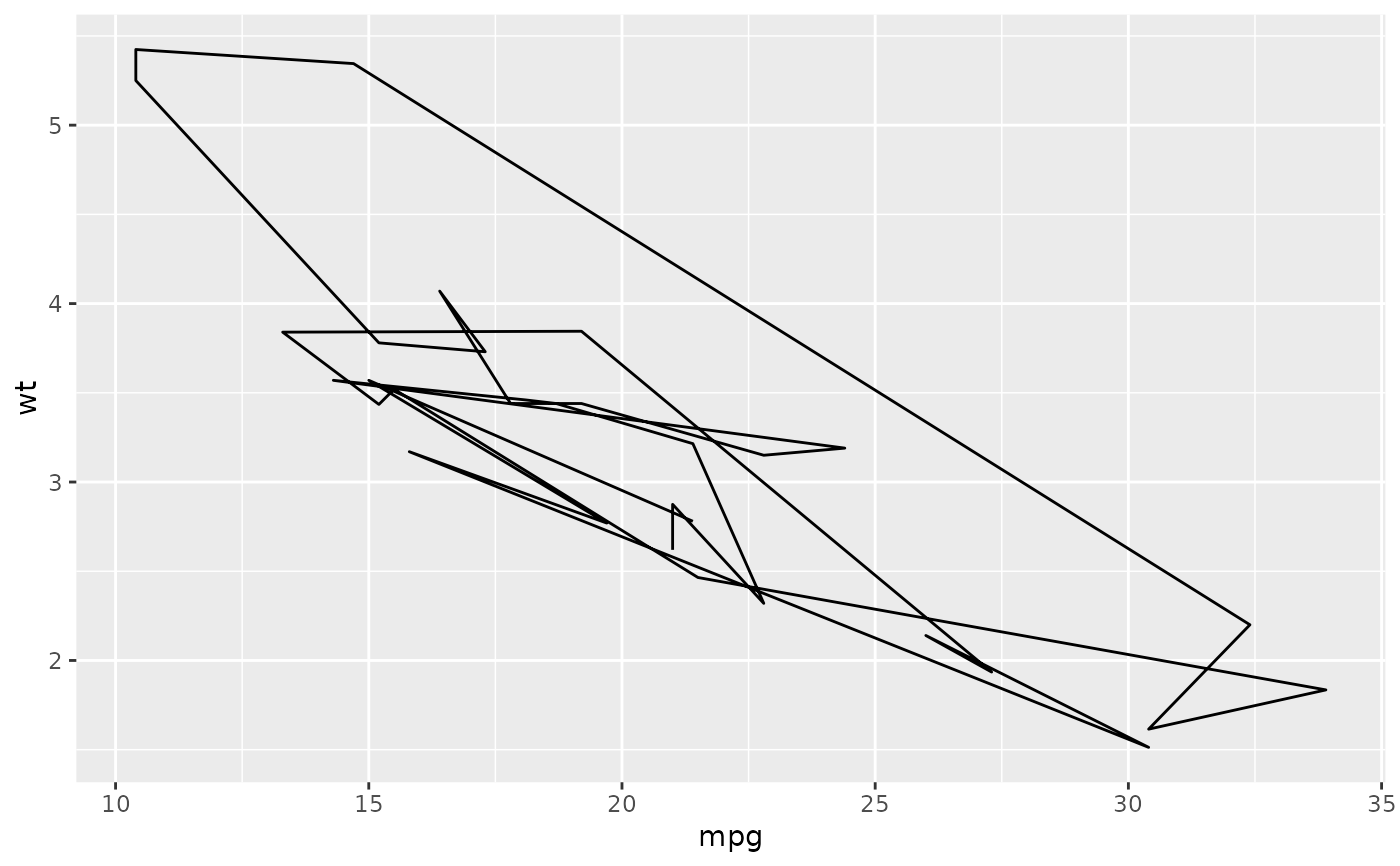 qplot(factor(cyl), wt, data = mtcars, geom = c("boxplot", "jitter"))
qplot(factor(cyl), wt, data = mtcars, geom = c("boxplot", "jitter"))
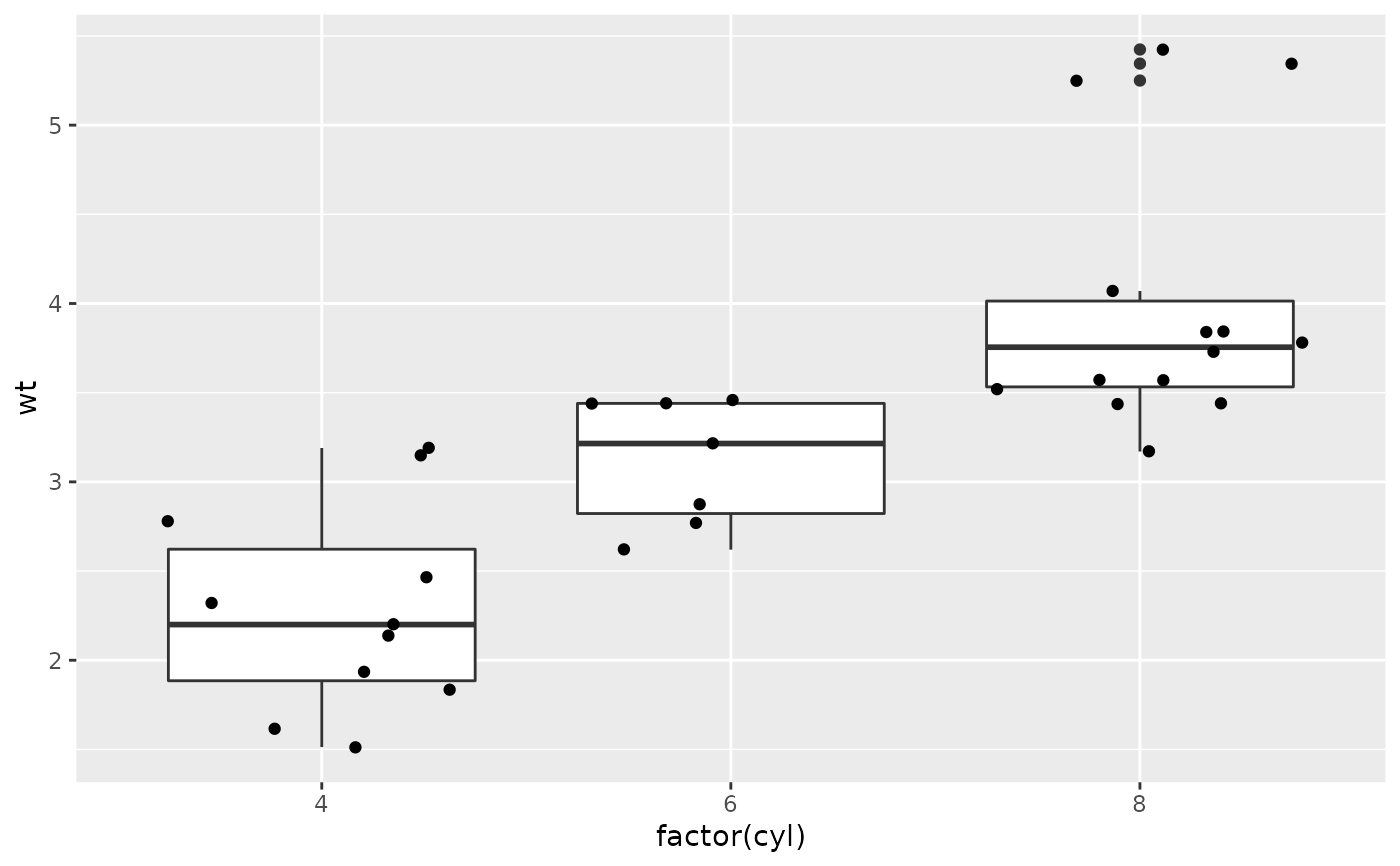 qplot(mpg, data = mtcars, geom = "dotplot")
#> Bin width defaults to 1/30 of the range of the data. Pick better value with `binwidth`.
qplot(mpg, data = mtcars, geom = "dotplot")
#> Bin width defaults to 1/30 of the range of the data. Pick better value with `binwidth`.
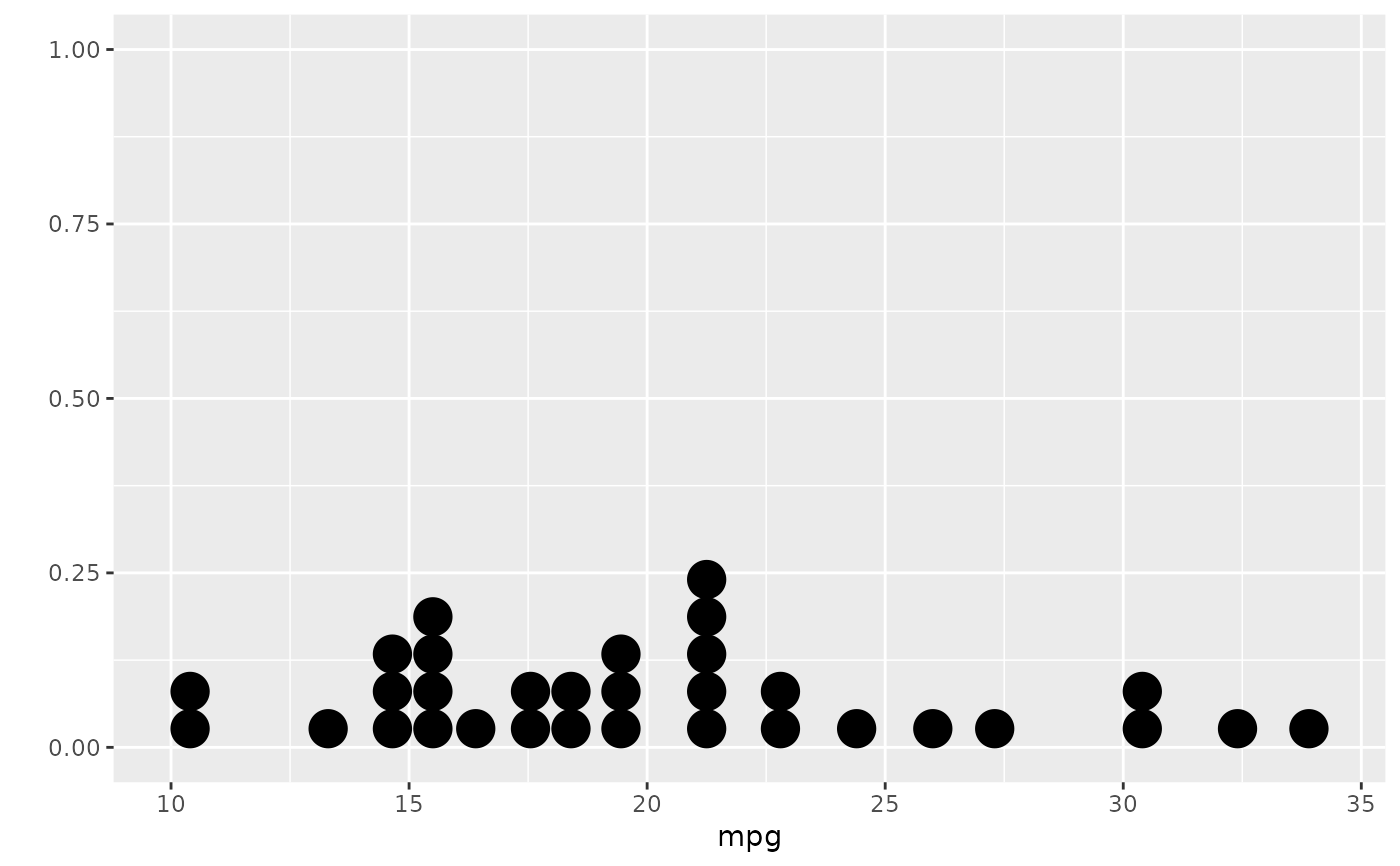 # }
# }